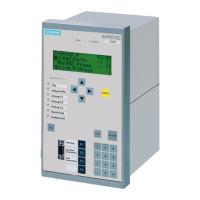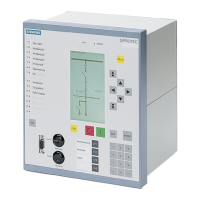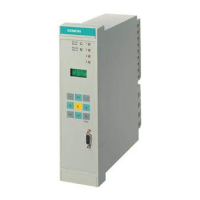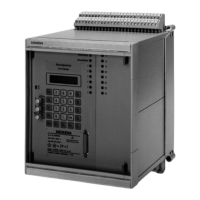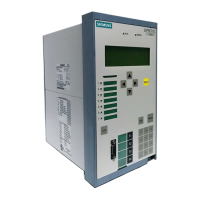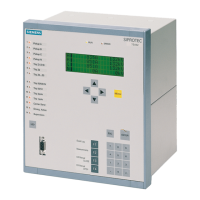2.11 Undervoltage and Overvoltage Protection (optional)
153
7SD610 Manual
C53000-G1176-C145-4
Overvoltage posi-
tive sequence
systemU
1
The device calculates the positive sequence system according to its defining equation
U
1
=
1
/
3
·(U
L1
+ a·U
L2
+ a
2
·U
L3
)
where a
= e
j120°
.
The resulting positive sequence voltage is fed to the two threshold stages U1> and
U1>> (see Figure 2-54). Combined with the associated time delays T U1> and T
U1>> these stages form a two-stage overvoltage protection for the positive sequence
system. Here too, the drop-out to pickup ratio can be set.
The overvoltage protection for the positive sequence system can also be blocked via
a binary input „>U1>(>) BLK“.
Figure 2-54 Logic diagram of the overvoltage protection for the positive sequence voltage system
Overvoltage protec-
tion U
1
with config-
urable compound-
ing
The overvoltage protection for the positive sequence system may optionally operate
with compounding. The compounding calculates the positive sequence system of the
voltage at the remote line end. This option is thus particularly well suited for detecting
a steady-state voltage increase caused by long transmission lines operating at weak
load or no load due to the capacitance per unit length (Ferranti effect). In this case the
overvoltage condition exists at the other line end but it can only be removed by switch-
ing off the local line end.
For calculating the voltage at the opposite line end, the device requires the line data
(inductance per unit length, capacitance per unit length, line angle, line length) which
were entered in the Power System Data 2 (Section 2.1.4.1) during configuration.
www . ElectricalPartManuals . com
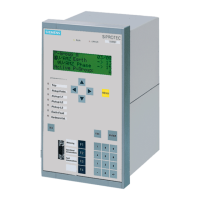
